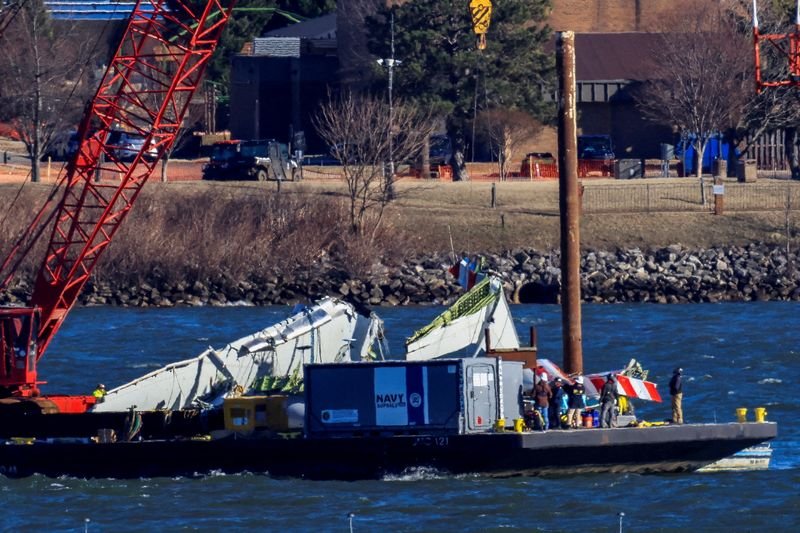NTSB Investigates Air Traffic Controller’s Alert Oversight in DC Jet Crash
The National Transportation Safety Board (NTSB) is examining the shortcomings of an air traffic controller in notifying a jet prior to a severe incident in Washington, D.C., which occurred earlier this year. This investigation pivots around two primary factors: air traffic management and the decision-making processes that led to the accident, raising crucial questions about aviation safety protocols.
The Incident Overview
In January, a commercial jet experienced a near-miss situation shortly before it attempted its landing approach. The incident unfolded as the aircraft approached the airfield, where it was supposed to land. The air traffic control unit managing the airport’s operations failed to relay critical information regarding a different aircraft already in the vicinity. This lapse posed a significant risk, heightening concerns over air safety and oversight within the control tower.
Air Traffic Control Responsibilities
Air traffic controllers play a vital role in ensuring the safety of flights by maintaining communication with pilots and managing airspace. Their responsibilities include providing updated flight information, issuing clearances, and advising on potential hazards. Understanding their obligations is crucial to assessing the severity of this incident and identifying systemic issues.
Key Investigation Areas
The NTSB is focusing on several key aspects as part of its investigation:
Communication Failures
Effective communication between air traffic control and pilots is imperative for safety. Investigators are scrutinizing the nature of the communications leading up to the incident, including whether the controller followed standard protocols in alerting the jet about the potential dangers.
Procedures and Protocols
The standard operating procedures that air traffic controllers are expected to follow are under review. This encompasses whether the controller acted in accordance with established guidelines when faced with a situation that could compromise flight safety.
Technological Considerations
Modern aviation relies heavily on technology for navigation and safety. The NTSB is looking into whether any technological failures contributed to the controller’s inability to provide timely alerts. This may involve assessing radar systems and communication tools that are crucial for enhancing situational awareness.
Implications for Aviation Safety
The ramifications of this investigation extend beyond this specific incident. The findings will likely have broader implications for the aviation industry, potentially leading to revisions of existing protocols and enhanced training for air traffic controllers. Ensuring that similar mishaps do not occur in the future hinges on the outcomes laid out by the NTSB.
Training and Development
The investigation’s insights may prompt airlines and regulatory bodies to reevaluate the training programs for air traffic control personnel. Effective training is paramount in maintaining high safety standards, particularly in learning how to handle unexpected circumstances efficiently and safely.
Regulatory Changes
As the NTSB findings emerge, there could be significant changes proposed at the regulatory level. Recommendations may be made to enhance communication standards and update operational protocols to mitigate risks associated with air traffic management.
The Role of Oversight Agencies
Oversight agencies, including the Federal Aviation Administration (FAA), will closely monitor the investigation’s outcomes. Their commitment to ensuring air safety necessitates vigilant oversight of any discrepancies identified during the inquiry. With ongoing advancements in aviation technology, the industry continues to evolve rapidly.
Conclusion
While the inquiry into the DC jet crash remains underway, the focus on communication and procedural adherence signifies an essential step toward improving aviation safety. The findings of the NTSB will not only seek accountability but also emphasize the necessity for continuous improvement in air traffic management practices and technology integration.
Staying Informed
For individuals involved in the aviation sector or those interested in flight safety, staying updated on the NTSB’s findings and recommendations is crucial. The commitment to safety is paramount, and awareness is a vital part of maintaining a secure flying environment.
By fostering open communication and ensuring that best practices are adhered to within air traffic control, the industry can work together to minimize risks associated with air travel. The culmination of this investigation represents an opportunity for progress in the commitment to safety and efficiency in aviation.
